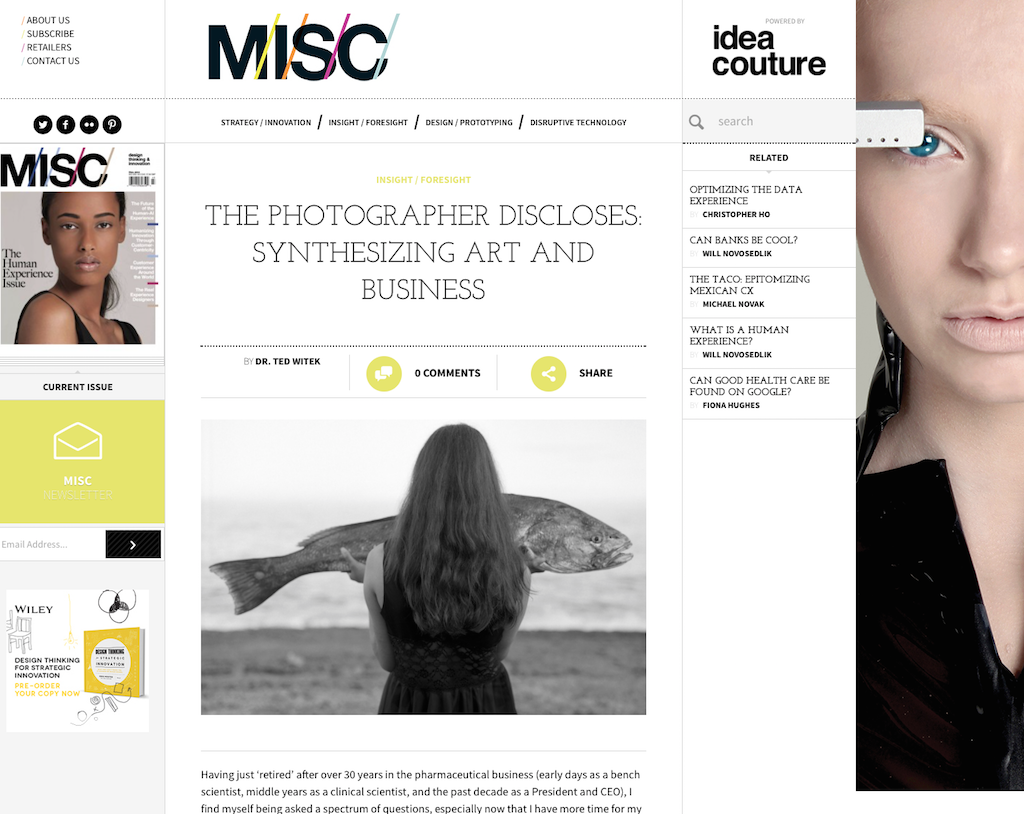
Having just ‘retired’ after over 30 years in the pharmaceutical business (early days as a bench scientist, middle years as a clinical scientist, and the past decade as a President and CEO), I find myself being asked a spectrum of questions, especially now that I have more time for my photography. Will I be pursuing it more? Perhaps open a gallery? What about continuing to work in healthcare? When I’m presented with these questions, I launch into my litany of how I will work to develop frameworks that prepare the heath care industry for “the second half.” I explain that for far too long, proving a drug or device as safe, effective, and pure was considered the end game when, in my opinion, it is only halftime.
No one should open champagne at halftime.
Our industry is actually quite good at bridging that first “valley of death” from concept to drug. I believe we do this better than anyone; imagine the Golden Gate Bridge over that valley. Where we really do fall short is in that ‘second half’ of moving drug to integrated health and happiness. Here, that “second valley of death” is bridged with a tightrope. Some stumble across; most simply fall off. How to integrate innovation into health systems requires a new design, new strategies, new policies, new competencies.
I’ve found most people that run art galleries are more difficult to deal with than drug benefit payers trying to be convinced of a premium price for a fourth to market me-too drug. I will, however, continue to integrate all my passions, photography included, towards insuring I stay fulfilled in business, in science, and in art. It has nothing to do with balance, but synthesis. For me it is very simple: In business, the numbers I produce speak. In science, the evidence I demonstrate speaks. In art, the photographs I print speak.
More complicated perhaps are the questions I now get about how my photography influences my style in business. In a profession where it is critical to understand that the absence of evidence is not the evidence of absence, I gave it further thought.
My approach to photography may give us some insight.
I am intrigued by the concept of seeing photographically—not photographing to document, but to transform perceptions. That requires an extreme alertness to ones environment.
I am pretty good at uniquely transforming perceptions. I preach the necessity of environmental alertness, remain true to my brand, know my core competencies, and outsource the other things to those that do it better. I embrace my trusted advisor and the hard facts when I do not have it right.
I also learned many of the technical aspects of lighting. I learned enough to know I will never use artificial light in my work. My cameras and film are all I bring to photograph. Natural light is the main ingredient feeding the sensual mystery in most of my images.
I use film exclusively. Digital photographic technology is fascinating and has rightly found a dominant place in the commerce of image making. Just not my place. Technically, it may only make a difference in a very limited number of images, and I love when I find those limited circumstances. It really is a unique product.
Not being my core competency, I collaborate with only two master printers for my work. My color printer, Carol, works between Maine and New York City. My black and white printer, Antonio, works in Lisbon (when they are not on holidays). They are an extension of my eyes. A long distance extension.
My curator is my most trusted advisor. She is a master at being direct and providing guardrails of reality to my concepts. In doing so, she brings my work to a different level with her aesthetic congruency. When I see my work displayed in a gallery or book, it’s then I realize most the importance of a team.
A photograph does not lie, per se. I have seen many in my business life talk about ‘customer focus’ without talking to customers. They speak about alternative channels without knowing the sea into which the channels empty. They paint pictures of the world that fits their product instead of being honest about how their products do and do not help our world. Yes, they are painters.
As Susan Sontag says, “the painter constructs, the photographer discloses.”
Dr. Ted Witek recently retired as President and CEO of Boehringer Ingelheim Canada Ltd, after 23 years with the corporation. He is currently a healthcare advisor, director, scholar, and photographer based in Toronto and Lisbon.



